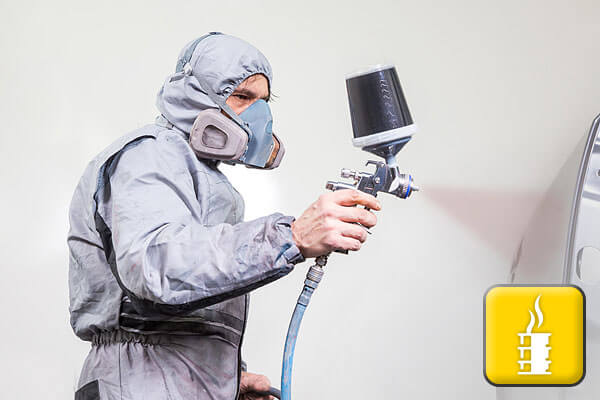Volatile Organic Compounds (VOC)
Volatile Organic Compounds Are Unbreathable
Effects from inhaling VOC’s depend on how much, how long and how often a person is exposed. Prolonged exposure to small amounts of VOCs for long periods of time may increase health problems. People who have asthma are at greater risk. Some of the most comon chemical compounds that produce VOC include paint overspray, coatings, solvents, adhesives, acetone and formaldehyde.
Short-Term (Acute) Exposure to High Levels of VOCs
- Eye, nose and throat irritation
- Headaches
- Nausea / Vomiting
- Dizziness
- Worsening of asthma symptoms
Long-Term (Chronic) Exposure to High Levels of VOCs
Increased risk of:
- Cancer
- Liver damage
- Kidney damage
- Central Nervous System damage
How Can I Protect Myself?
Proper Ventilation
Applications like painting, cleaning and washing parts with solvent based chemical products can produce a substantial amount of VOC fumes. Adequate ventilation is only part of the solution, these fumes need to be captured before they have a chance to reach breathing zone of the worker. This type of pollution requires a carbon based filtration system.
Know the Application & Assess Safety Needs
Your fume capture equipment, filtration type, and supplementary personal protection equipment will depend on the type and concentration of VOC’s you are working with.
Evaluate your work situation critically. Ask yourself:
- Are you in a confined space with little or no ventilation?
- What kind of VOC’s are you dealing with? (consult your MSDS)
- Do I need to wear a respirator?